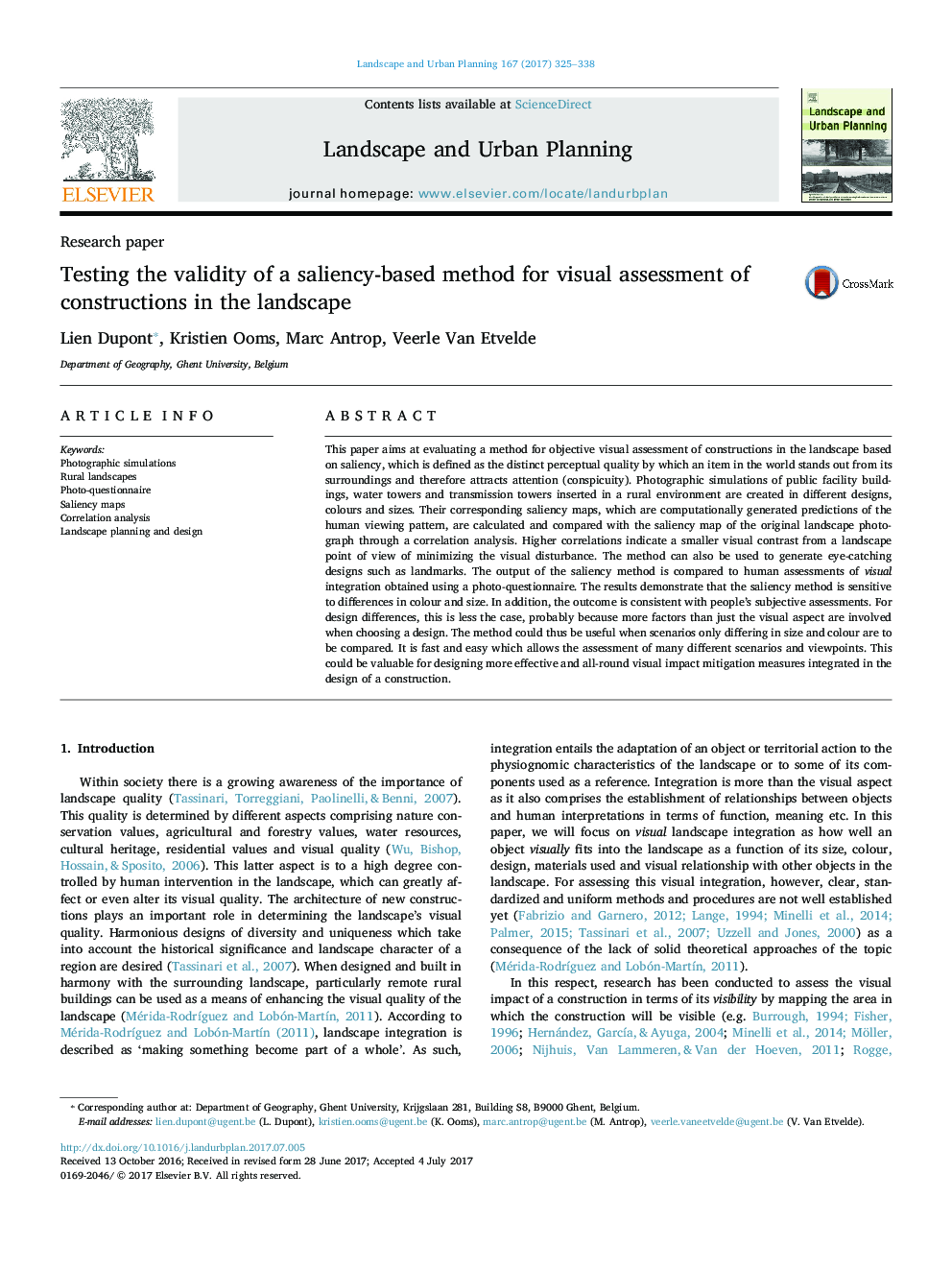| Article ID | Journal | Published Year | Pages | File Type |
|---|---|---|---|---|
| 5114963 | Landscape and Urban Planning | 2017 | 14 Pages |
Abstract
This paper aims at evaluating a method for objective visual assessment of constructions in the landscape based on saliency, which is defined as the distinct perceptual quality by which an item in the world stands out from its surroundings and therefore attracts attention (conspicuity). Photographic simulations of public facility buildings, water towers and transmission towers inserted in a rural environment are created in different designs, colours and sizes. Their corresponding saliency maps, which are computationally generated predictions of the human viewing pattern, are calculated and compared with the saliency map of the original landscape photograph through a correlation analysis. Higher correlations indicate a smaller visual contrast from a landscape point of view of minimizing the visual disturbance. The method can also be used to generate eye-catching designs such as landmarks. The output of the saliency method is compared to human assessments of visual integration obtained using a photo-questionnaire. The results demonstrate that the saliency method is sensitive to differences in colour and size. In addition, the outcome is consistent with people's subjective assessments. For design differences, this is less the case, probably because more factors than just the visual aspect are involved when choosing a design. The method could thus be useful when scenarios only differing in size and colour are to be compared. It is fast and easy which allows the assessment of many different scenarios and viewpoints. This could be valuable for designing more effective and all-round visual impact mitigation measures integrated in the design of a construction.
Related Topics
Life Sciences
Agricultural and Biological Sciences
Ecology, Evolution, Behavior and Systematics
Authors
Lien Dupont, Kristien Ooms, Marc Antrop, Veerle Van Etvelde,
